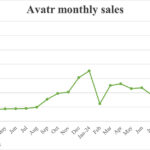California Governor Gavin Newsom signed into law SB-1271 last September, which has redefined and added to the electric bicycle regulations in the state. One of the key changes is the clarification of the three-class e-bike system, which may render many throttle-enabled electric bikes currently on the road in California as no longer street legal.
The three-class system in California classifies electric bicycles based on their capabilities. Class 1 e-bikes are limited to 20 mph on pedal assist, Class 2 e-bikes can reach 20 mph with a throttle, and Class 3 e-bikes can go up to 28 mph on pedal assist. The new law now states that Class 1 and Class 3 e-bikes cannot operate on motor power alone and cannot have a functional hand throttle. Throttles are only legal on e-bikes marketed as Class 2.
The law has also removed the word “continuous” from the definition of motor power, stating that e-bikes should not exceed 750 watts of power. This change aims to prevent manufacturers from advertising higher peak power ratings than allowed.
While the new law may impact the e-bike industry in California, there are ways for manufacturers to comply with the regulations. They can market Class 3 e-bikes as Class 2 e-bikes that can be unlocked to reach speeds above 20 mph on pedal assist. This loophole allows riders to modify their e-bikes to higher speeds, as long as they adhere to the power limits and other regulations.
The impact of the new law will first be seen on e-bikes capable of operating at speeds higher than 20 mph on throttle only. Popular brands offering off-road modes may need to adjust their models to comply with the regulations in California. The enforcement of the law and its implications on future legislation in other states or at the federal level remain to be seen.
Overall, the new e-bike regulations in California aim to ensure the safe and legal operation of electric bicycles on public roadways. As the industry adapts to these changes, it is essential for manufacturers and riders to understand and comply with the updated regulations.







